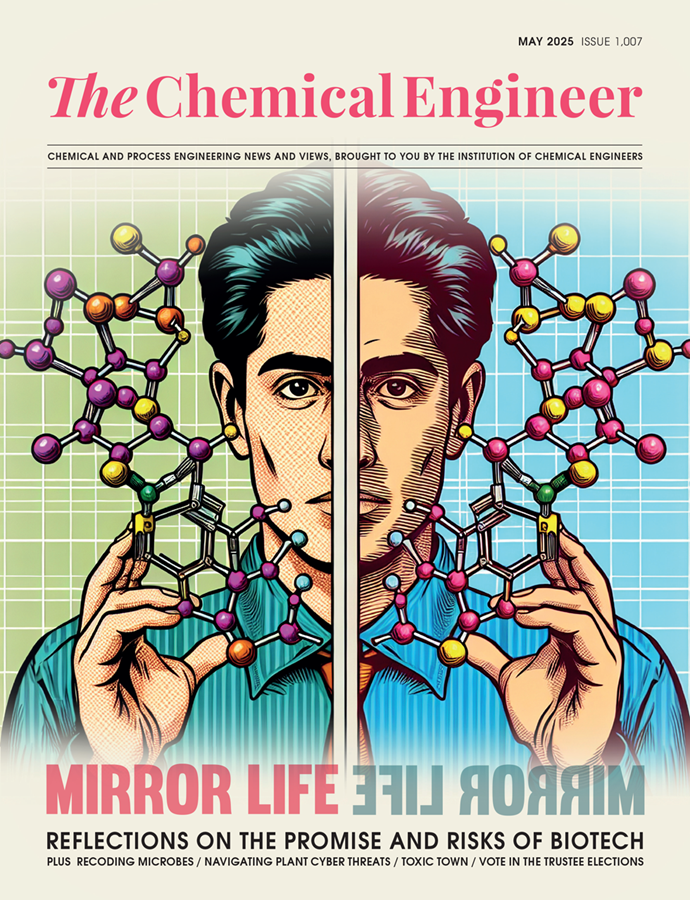UK project starts sucking CO2 from the sea
A PILOT plant that sucks CO2 from the sea has started operating at the Sea Life Centre in Weymouth, UK.
While there are already commercial plants operating to draw CO2 from the air, the team behind the SeaCURE plant want to take advantage of CO2 being 150 times more concentrated in seawater.
The project is led by the University of Exeter with partners from Plymouth Marine Laboratory, Brunel University London and industrial partner Eliquo Hydrok. The plant draws seawater directly from Weymouth Bay, processes it and then returns it to the sea.
The process involves acidifying seawater to release CO2 which is then captured and stored using a pressure swing absorption system involving activated carbon made from coconut husks.

SeaCURE’s capture process has been developed by Salman Masoudi Soltani, associate professor of chemical engineering at Brunel University.
“Salman has been researching lots of media that CO2 adsorbs to,” says the project’s co-leader Tom Bell from Plymouth Marine Laboratory. “It’s nice because we’re reusing a waste product.”
The team avoided using tried and tested amines to capture carbon because the concentrated chemicals are tricky to handle and can pose a health risk.
The water is then neutralised with alkali chemicals and pumped back into the sea where it draws more CO2 from the atmosphere, creating a virtuous cycle.
Energy for electrodialysis
Compared to operators of direct air capture techniques who spend a lot on energy for pumping air through their systems, the key trade off of stripping CO2 from seawater is the energy used to produce SeaCURE’s acid and alkali chemicals.
The project is producing these through the electrodialysis of water. Renewable energy can be used to apply an electric current either side of a membrane to produce hydroxide and hydrogen ions.
“Doing electrodialysis routinely on seawater in this way has not been done before,” Bell said. “Part of what we’re doing is investigating the viability of the process and its energy costs compared to other technologies for carbon capture.”
The pilot has the capacity to capture up to 100 t/y of CO2. The team says there is massive potential to scale it up. Just how large though depends on the findings from the project. The team needs to understand how water containing low concentrations of carbon behaves when it’s released back into the sea.
Bell explains that any future project would need to avoid the inefficiency of drawing recently-processed water in to the plant before it has had time to absorb more CO2. That could limit how many plants could be deployed in a single region.
“We may need a distributed network of smaller sites,” Bell says.
They would also need to avoid deploying the technology in areas of deep water formation because water in these regions may sink before it can absorb CO2 from the atmosphere. Bell expects this shouldn’t be a problem around the UK because water stays in contact with the atmosphere while on the continental shelf.
The team has not ruled out deploying the technology offshore.
Bell says: “It could improve the viability of technology by not talking up valuable land. You also increase the area of the ocean that can be processed.”
However, the offshore platform would need a renewable power supply and connecting to a pipeline to carry its captured carbon away for storage. This would limit the economics of how far the technology could be deployed from other infrastructure.
SeaCURE researchers are also using the pilot to investigate what impact adding water with low concentrations of CO2 back into the sea has on local marine life.
“We’ve learnt a lot but more work is needed to understand the potential environmental impacts, to understand how seawater moves, how much carbon it removes from the atmosphere, and the technological requirements for scale up.”
The UN Intergovernmental Panel on Climate Change (IPCC) has said large-scale deployment of CO2 removal technologies is unavoidable if net zero emissions are to be achieved. It has reported that direct removal of CO2 could help to counterbalance residual emissions from hard-to-abate industry sectors and in the longer-term achieve net negative emissions.
“There’s work to do but it’s an urgent problem,” Bell says. “The next ten years of activity will be crucial.”
Recent Editions
Catch up on the latest news, views and jobs from The Chemical Engineer. Below are the four latest issues. View a wider selection of the archive from within the Magazine section of this site.




